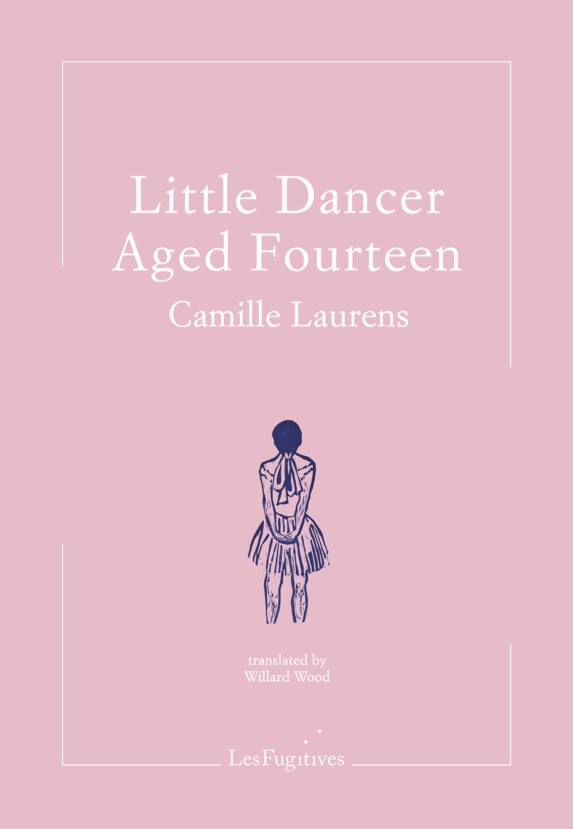Camille Laurens: Little Dancer Aged Fourteen review - the story of a sculpture | reviews, news & interviews
Camille Laurens: Little Dancer Aged Fourteen review - the story of a sculpture
Camille Laurens: Little Dancer Aged Fourteen review - the story of a sculpture
An unhappy life immortalised in one of art's most celebrated sculptures

Edgar Degas is famous for his depictions of ballet dancers. His drawings, paintings and sculptures of young girls clad in the uniform of the dance are signs of an artistic obsession that spanned a remarkable artistic career.
Laurens’ project is not simply a matter of adding another voice to the myriad artistic critiques of Degas’ work. Little Dancer Aged Fourteen is precisely what its title suggests: an investigation into the life of the girl who became the subject of this artwork. The girl in question, Marie van Goethem, was one of the so-called petits rats who in late nineteenth-century Paris barely found a living in her work as a ballet dancer at the Paris Opera. These children often lived in poverty, forced into increasingly disreputable work in order to feed their families.
Under the pen of an author intent on uncovering all there is to be known of Marie’s life, Little Dancer Aged Fourteen develops into a curious form of investigative literature, exposing the unspoken moral failings of nineteenth-century culture in its search for Marie. The criticism throughout, if implicit, is certain. “Which counts for more, the painting or the model, art or nature?” asks Laurens, evoking the male gaze that shapes society’s view of art, where an artwork is simply considered as a reflection of its creator’s genius. No time is given to the living subject represented within the work; to pose for a sculpture is to submit oneself entirely to the gaze of the artist. Laurens is well aware of the cruel irony in the fact that many of the Paris Opera’s petits rats were forced into prostitution as a way of earning a living. Modelling and prostitution alike are dependent on selling the body.
 If details of Marie’s own life are scarce, Laurens draws on innumerable cultural historical artefacts to inform her vivid depiction of nineteenth-century Parisian society. Writing on an era whose novels were dominated by Naturalism, a form centring on the raw representation of modern life in all its baseness, Laurens shows a similar intent in peeling away at the layers of Degas’ sculpture to reveal the often sordid story beneath. The book is adept at evoking the "canvas of sufferings" likely endured by Marie and her ilk, in a world of male "protectors" among whom Degas seems only to retain his honour on account of his misogyny.
If details of Marie’s own life are scarce, Laurens draws on innumerable cultural historical artefacts to inform her vivid depiction of nineteenth-century Parisian society. Writing on an era whose novels were dominated by Naturalism, a form centring on the raw representation of modern life in all its baseness, Laurens shows a similar intent in peeling away at the layers of Degas’ sculpture to reveal the often sordid story beneath. The book is adept at evoking the "canvas of sufferings" likely endured by Marie and her ilk, in a world of male "protectors" among whom Degas seems only to retain his honour on account of his misogyny.
Often reaching the level of art criticism, Little Dancer Aged Fourteen suggests rightly that the significance of this iconic sculpture can be enriched by a full consideration of the context in which it was made. The problem, however, lies in just how little is known about the life of Marie van Goethem. Among the boundless descriptions of Parisian society, the life of the little dancer is revealed in short excerpts whose brevity serves only to confirm the androcentric reality of her time. Laurens captures the frustration – and fascination – of this investigation and of art history in general: “The sculpture provides no answer. Degas provides no answer”.
For a work of non-fiction, the volume of questions and speculation is a sign that this is an intensely personal study, undertaken by an author more accustomed to writing novels. Its status as a passion project, though, takes nothing away from the achievement of Little Dancer Aged Fourteen. Reverting to the author’s own life in its closing moments, this book wills its reader to look beyond the surface, to discover the writer behind the writing, and the girl behind the sculpture.
- Little Dancer Aged Fourteen by Camille Laurens trans. Willard Wood (Les Fugitives, £14.99)
- Read more book reviews on theartsdesk
rating
Explore topics
Share this article
The future of Arts Journalism
You can stop theartsdesk.com closing!
We urgently need financing to survive. Our fundraising drive has thus far raised £49,000 but we need to reach £100,000 or we will be forced to close. Please contribute here: https://gofund.me/c3f6033d
And if you can forward this information to anyone who might assist, we’d be grateful.

Subscribe to theartsdesk.com
Thank you for continuing to read our work on theartsdesk.com. For unlimited access to every article in its entirety, including our archive of more than 15,000 pieces, we're asking for £5 per month or £40 per year. We feel it's a very good deal, and hope you do too.
To take a subscription now simply click here.
And if you're looking for that extra gift for a friend or family member, why not treat them to a theartsdesk.com gift subscription?
more Books
 'We are bowled over!' Thank you for your messages of love and support
Much-appreciated words of commendation from readers and the cultural community
'We are bowled over!' Thank you for your messages of love and support
Much-appreciated words of commendation from readers and the cultural community
 Natalia Ginzburg: The City and the House review - a dying art
Dick Davis renders this analogue love-letter in polyphonic English
Natalia Ginzburg: The City and the House review - a dying art
Dick Davis renders this analogue love-letter in polyphonic English
 Tom Raworth: Cancer review - truthfulness
A 'lost' book reconfirms Raworth’s legacy as one of the great lyric poets
Tom Raworth: Cancer review - truthfulness
A 'lost' book reconfirms Raworth’s legacy as one of the great lyric poets
 Ian Leslie: John and Paul - A Love Story in Songs review - help!
Ian Leslie loses himself in amateur psychology, and fatally misreads The Beatles
Ian Leslie: John and Paul - A Love Story in Songs review - help!
Ian Leslie loses himself in amateur psychology, and fatally misreads The Beatles
 Samuel Arbesman: The Magic of Code review - the spark ages
A wide-eyed take on our digital world can’t quite dispel the dangers
Samuel Arbesman: The Magic of Code review - the spark ages
A wide-eyed take on our digital world can’t quite dispel the dangers
 Zsuzsanna Gahse: Mountainish review - seeking refuge
Notes on danger and dialogue in the shadow of the Swiss Alps
Zsuzsanna Gahse: Mountainish review - seeking refuge
Notes on danger and dialogue in the shadow of the Swiss Alps
 Patrick McGilligan: Woody Allen - A Travesty of a Mockery of a Sham review - New York stories
Fair-minded Woody Allen biography covers all bases
Patrick McGilligan: Woody Allen - A Travesty of a Mockery of a Sham review - New York stories
Fair-minded Woody Allen biography covers all bases
 Howard Amos: Russia Starts Here review - East meets West, via the Pskov region
A journalist looks beyond borders in this searching account of the Russian mind
Howard Amos: Russia Starts Here review - East meets West, via the Pskov region
A journalist looks beyond borders in this searching account of the Russian mind
 Henry Gee: The Decline and Fall of the Human Empire - Why Our Species is on the Edge of Extinction review - survival instincts
A science writer looks to the stars for a way to dodge our impending doom
Henry Gee: The Decline and Fall of the Human Empire - Why Our Species is on the Edge of Extinction review - survival instincts
A science writer looks to the stars for a way to dodge our impending doom
 Jonathan Buckley: One Boat review - a shore thing
Buckley’s 13th novel is a powerful reflection on intimacy and grief
Jonathan Buckley: One Boat review - a shore thing
Buckley’s 13th novel is a powerful reflection on intimacy and grief
 Help to give theartsdesk a future!
Support our GoFundMe appeal
Help to give theartsdesk a future!
Support our GoFundMe appeal
 Jessica Duchen: Myra Hess - National Treasure review - well-told life of a pioneering musician
Biography of the groundbreaking British pianist who was a hero of the Blitz
Jessica Duchen: Myra Hess - National Treasure review - well-told life of a pioneering musician
Biography of the groundbreaking British pianist who was a hero of the Blitz

Add comment